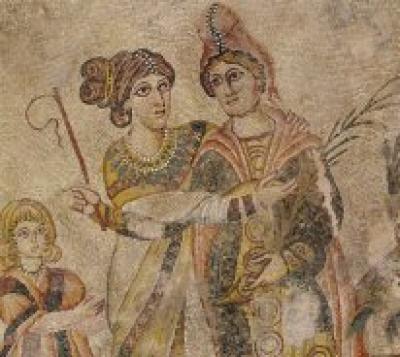Researchers at Carlos III University in Madrid have announced that many Roman mosaics include references to women as the cause of wars and other evils. The roles of women in the mosaic can be broken into three broad groups: familial (wife, mother, daughter), representing fidelity; erotic images hinting at wild pleasures not found in the marriage bed; and mythological figures, such as Amazons. The material is being approached
From a perspective that avoids considering images as a mere illustrations, this work deals with the analysis and debate of the different roles of women as they are reflected in Roman mosaics, “rejecting the out-dated idea of an unconscious use of archetypes and models that holds no historic significance”.
This line of research, which is part of the wider Project “Sociedad y economía en los mosaicos hispanorromanos II” (Society and economy in hispanoroman mosaics II), of the Programa Nacional de Humanidades de la Comisión Interministerial de Ciencia y Tecnología (CICYT – National Program for the Humanities of the Interministerial Commission on Science and Technology), invites us to reflect on the significance of the mosaics’ images and their relationship with the ideology of the elites during the Roman Empire. “Keeping in mind that the mosaics tiled the rooms in the residences of the most privileged members of the elite classes, whose opinion would have been essential in choosing scenes and motifs, the evocation of very concrete stereotypes, which in many cases would have been the fruit of conscious, premeditated choices on the part of domini, stands out”, states Luz Neira. In this way, the research is intended to highlight the idea that those stereotypes, whose validity appeared to be reinforced by their old age alone, were the result of self-interested construction and dissemination; thus, the mosaics shed even more light on the mentality of the elites than they do on the situations and circumstances experienced by women living in Imperial Rome.
(Photo: UC3M)


